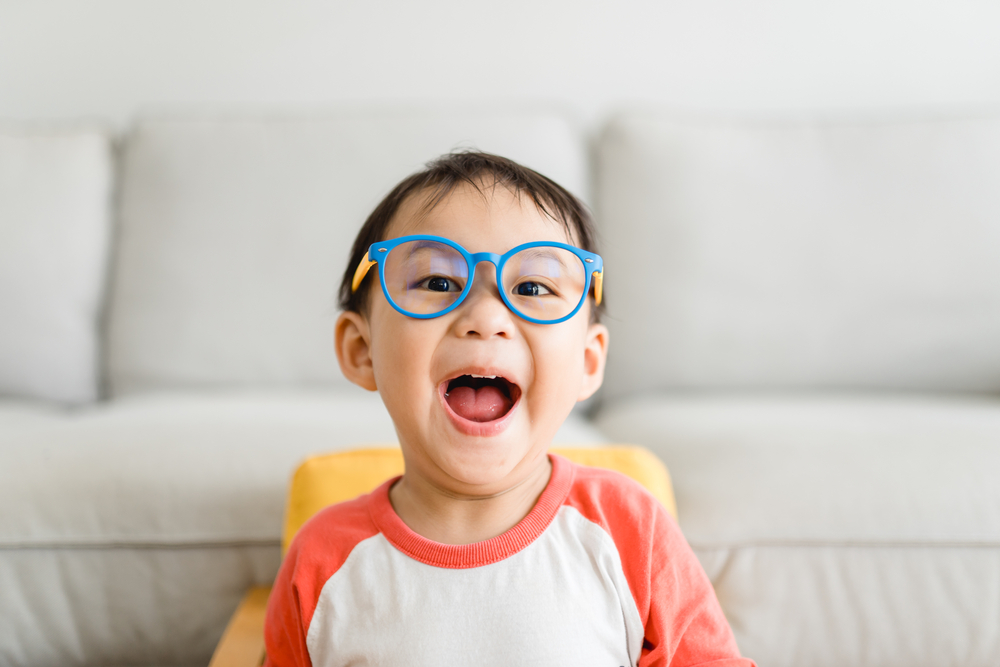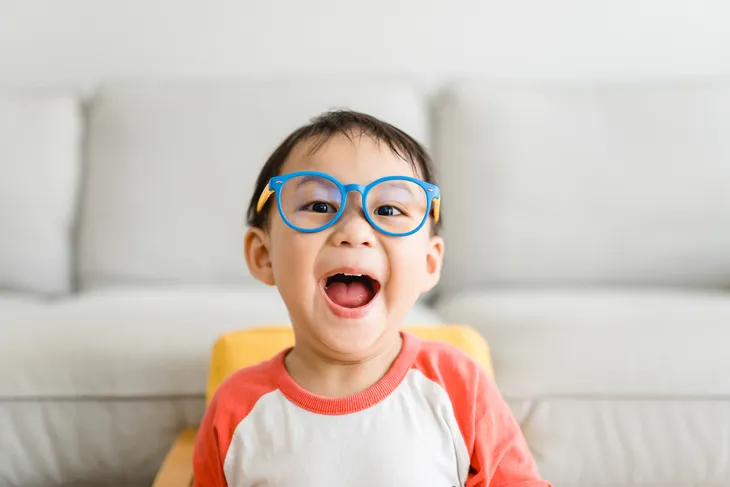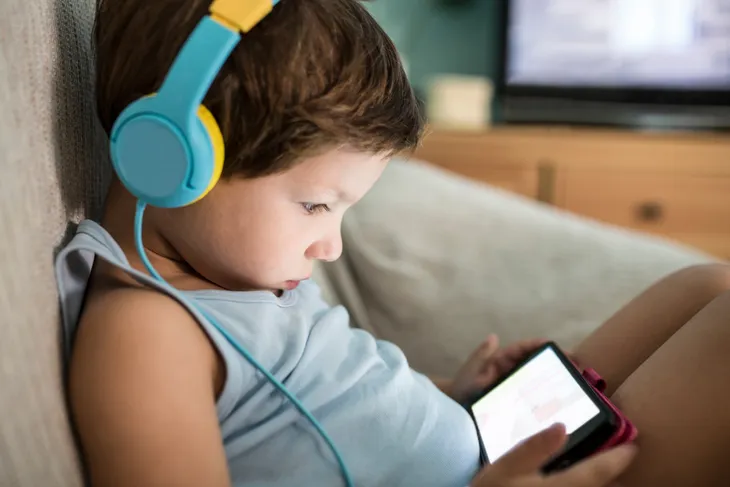Things are busy on a rainy Saturday afternoon when I make a trip to the mall to finalize some back-to-school shopping. I pass by a lot of people, including several parents with young children under two years old, in strollers, and am struck by the fact that all of the children have a tablet or phone in their hands. Has technology become the ultimate tool for keeping children calm?
As an optometrist and eye health expert, this observation saddens me every time I see it, since I know all the harmful effects such exposure to electronic tools can have on children.
These effects are all the more critical during the first years of life, both on the visual level and on the cognitive and social development of children.
Visual development of children
The human eye develops through stimulation. The quality of the optical stimulus influences the growth of the eyeball via a complex and balanced mechanism. At birth, the eye is hyperopic, that is to say, its power is not perfectly adjusted to its size. A child sees at short distances and is barely able to distinguish a shadow when grandpa comes to the bedroom door.
In the first few weeks, the eye grows, the retina matures and a balance is established between the growth of the eyeball and the power of the inner lens. At six months of age, each of the toddler’s two eyes has the vision of an adult eye. From this moment on, the eyes will develop their coordination, in order to generate vision in three dimensions. It’s also starting at the age of six months that the communication between the eyes develops in the visual brain as well.
Billions of neurological connections will have to be made during the first eight years of life. This maturation time is long, but necessary, considering that more than a third of the brain’s neurons are dedicated to vision.
A question of distance
Electronic devices are not, in themselves, a source of visual problems. Rather, the inappropriate use of these devices can interfere with the natural development of the eye, as well as reading and learning skills.
The first thing to consider is viewing distance. The eye is designed to look at a near distance that is about equal to the length of the forearm (distance from the elbow to the fingertips of the hand). That means about 30 cm for a young child, and 40 cm for an adult. However, tablets and phones are held on average 20-30 cm from the eye, and this distance becomes shorter with prolonged exposure. The visual effort required to maintain a clear image at this distance is therefore doubled.
A distance that is too short influences the quality of the retinal image (and therefore visual development) and causes excessive eye fatigue. It is also important to understand that when eyes must accommodate short distances, they automatically converge towards the nose in order to focus at the normal reading distance. Too much effort spent accommodating the short distance is therefore accompanied by a greater than normal convergence. As the eye cannot maintain this prolonged effort over a long period of time, it will relax its effort and the perceived image will become blurred for a while, a sensory penalty that we want to avoid. After a period of rest, the eye will resume its effort, and this alternation between the clearness and the blur will continue as long as attention to the close image is required. So, ideally, the tablet or phone should always be kept at the distance of the forearm.
Constant stimulation is not recommended
The use of electronic tools, with games or videos, requires a constant attention span, without breaks. This is the second factor to consider. When a child draws in a notebook or reads a paper book, he or she will instinctively stop at some point, look elsewhere, far away, and become interested in something else around them. These pauses and breaks are beneficial for the visual system to recover from its effort. Focusing on targets at a distance is also beneficial to the child’s visual development. With electronic tablets, it is not uncommon to see children doing sessions of more than two to three hours continuously, without looking up from the screen.
The visual apparatus of children from zero to two years old is simply not sufficiently developed and robust to undergo such stress from constant stimulation in front of the screen. In particular, the structural elements of the sclera (the deep layer of the eye), which give the eye rigidity and determine its size, develop between zero and two years of age and then stabilize. The visual stimulus at these ages can interfere and therefore influence the development of visual defects and pathology in later life.
It is also important to note that the screen can emit blue light. Children’s eyes do not filter these rays like those of an adult. This means that children are exposed to more blue light, which may stimulate nearsightedness and disrupt the secretion of melatonin, which regulates our biological clock. This can disrupt the naps necessary for children of this age, as well as sleep during the night. Sleep loss can also lead to myopia.
Let’s learn about electronics
For normal visual development, it is therefore recommended to avoid all exposure to electronic devices between the ages of zero and two. The exception would be occasional video conversations, under the supervision of a parent, to say hello to a grandparent who lives far away, for a few minutes.
From the age of two years on, an hour of exposure per day can be considered, especially to consult educational sites, always accompanied by a parent or an educator.
When the visual system is mature, around the age of six to eight, exposure can be increased gradually, without exceeding two to three hours per day, with 10-minute breaks every hour. Electronic device use should be avoided during meals, family activities, and at least one hour before sleep.
Let’s play outside!
The best advice for successful visual development is to encourage exposure to outdoor light for at least one hour per day, ideally two hours. We are talking about playing, walking, and activities that are done outside. The amount of light is then much greater than indoors, which would stimulate the production of dopamine, a chemical mediator essential to regulating the growth of the eye. This is the most effective way to prevent the onset of myopia in children.
It is also important to make sure that a child’s visual system is normal and developing naturally. Therefore, the first examination by an optometrist should be done at six months of age (to validate that the eye has normal optics and that there are no congenital defects), and then at three years of age to evaluate eye coordination. If everything is normal, the next examination will take place at five years of age, and annually thereafter, considering that vision can change rapidly.
In the case of an abnormality, the earlier we intervene in the process, the easier it is to restore normal oculo-visual function, either by exercise or by optical means.
By following these recommendations for visual hygiene, we will protect children’s visual system and ensure their normal development.
And let’s not forget that the most beautiful screen in the world is nature! We should offer it to our children more often.
Langis Michaud, Professeur Titulaire. École d’optométrie. Expertise en santé oculaire et usage des lentilles cornéennes spécialisées, Université de Montréal
![]()
This article is republished from The Conversation under a Creative Commons license. Read the original article.








